Dive into the world of pond ecosystems, where life thrives in harmonious balance. A pond is not just a quiet pool of water; it’s a busy place where pond plants, animals, and tiny creatures live together, each helping to keep the place alive and healthy.
In this blog post, we’re going to take a closer look at what happens in a pond ecosystem, and why they are so important.
Join us as we explore the secrets of pond ecosystems, discovering how they work and why they matter.
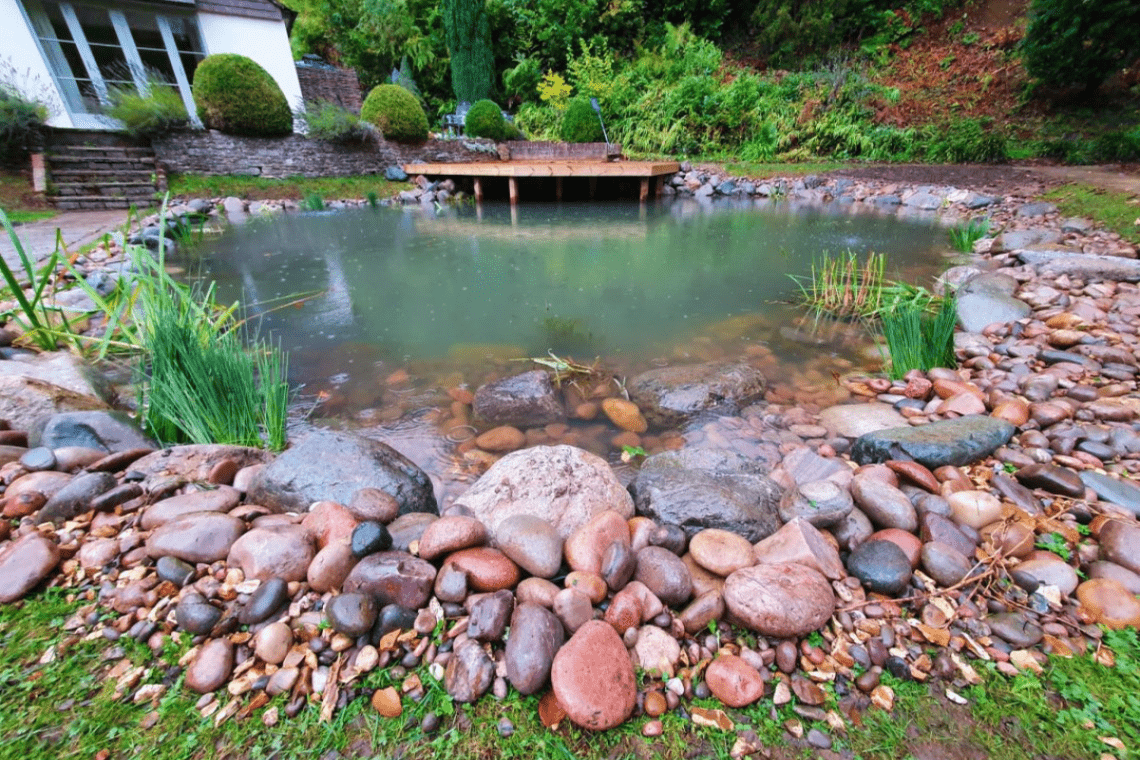
Key Takeaways
- Ponds are self-contained ecosystems bustling with diverse life, including large pond species and small pond species.
- Each zone within a pond, from the pond surface to the bottom of the pond, has distinct inhabitants and functions.
- Environmental threats require active measures to preserve pond ecosystems, including seasonal ponds and those in areas of shallow water.
Fundamental Components of a Pond Ecosystem
In simpler terms, a pond ecosystem is a dynamic and intricate system, operating as a small-scale freshwater ecosystem that is both distinct and interlinked with larger aquatic systems.
What is a Pond Ecosystem?
A pond ecosystem is a dynamic, self-contained freshwater environment where a variety of organisms including plants, animals, and microorganisms interact and depend on each other for survival. This ecosystem is typically divided into biotic factors categorised as producers, consumers, and decomposers.
Producers, like aquatic plants and algae, generate energy through photosynthesis, providing oxygen and sustenance to the ecosystem. Consumers are divided into primary (e.g., zooplankton), secondary (e.g., small fish), and tertiary (e.g., large fish and amphibians), each playing a role in the food chain.
Decomposers, such as bacteria and fungi, break down dead organic material, recycling nutrients back into the ecosystem. These interactions ensure the balance and health of the pond ecosystem.
Living Components and Their Roles
At the base of the pond’s food web are microorganisms and aquatic plants. These organisms are primary producers, using sunlight to create energy through photosynthesis.
They are crucial as they produce oxygen and provide food for other pond inhabitants, while shoreline plants absorb nitrogen and other excess nutrients.
- Primary consumers: Small microorganisms and certain animals, like zooplankton, feed on algae and plant material. They are the primary consumers, supporting higher trophic levels.
- Secondary consumers: These include pond invertebrates and some fish species that consume primary consumers.
- Tertiary consumers: Larger fish species and amphibians represent tertiary consumers, preying on secondary consumers.
- Decomposers: Beneficial bacteria and fungi break down dead organisms and waste products, recycling nutrients back into the pond ecosystem.
Non-Living Environmental Factors
The non-living, or abiotic factors, shape the ecosystem and include:
- Water quality: A range of factors such as temperature, oxygen levels, and the presence of nutrients like nitrogen and phosphates. It’s important to regularly test pond water to monitor these parameters.
- Light: Penetration affects photosynthesis rates and influences the types of plants and algae that can survive.
- Temperature: Determines the metabolic rates of organisms and the capacity of water to hold oxygen.
- Nutrients: Availability of nitrogen, phosphorus, and other nutrients mediates the growth of biotic components.
- Carbon dioxide: Utilised by plants and algae for photosynthesis, influencing the ecosystem’s primary productivity.
Interactions Within the Pond Ecosystem
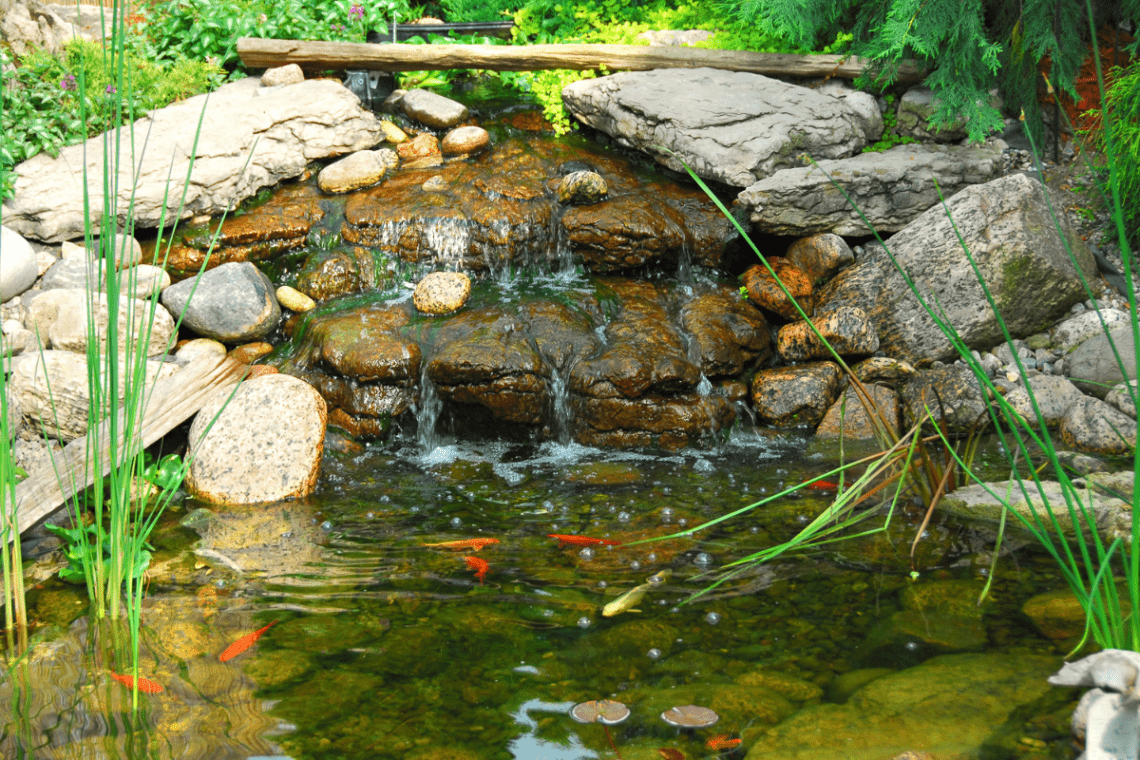
In your exploration of a pond ecosystem, you’ll uncover the complex web of relationships between diverse organisms.
Here, energy flows from the sun to various life forms, and every creature, from the smallest algae to the largest fish, plays a role in this aquatic theatre.
Food Chains and Energy Flow
The sun is the ultimate source of energy for ponds. Aquatic plants and algae harness sunlight through photosynthesis, creating energy-rich compounds.
Zooplankton then graze on these producers, transferring energy up the chain. Small pond species and invertebrates like snails feed on zooplankton, and in turn, are preyed upon by larger vertebrates such as frogs and bigger fish.
This sequence forms a pond ecosystem food chain, circulating energy throughout the pond.
Symbioses and Predatory Dynamics
Within this aquatic environment, you’ll find fascinating symbiotic relationships. For instance, tadpoles often forage on algae-covered surfaces, inadvertently providing a cleaning service that benefits both parties.
Meanwhile, predatory dynamics are equally important. Predators, including fish and frogs, keep populations of herbivores like snails and tadpoles in check, preventing overgrazing and allowing a diverse range of species to thrive.
Carnivores, such as larger fish, ensure that the energy continues to transfer up the chain, maintaining the balance of the ecosystem.
Unique Habitats Within Pond Ecosystems
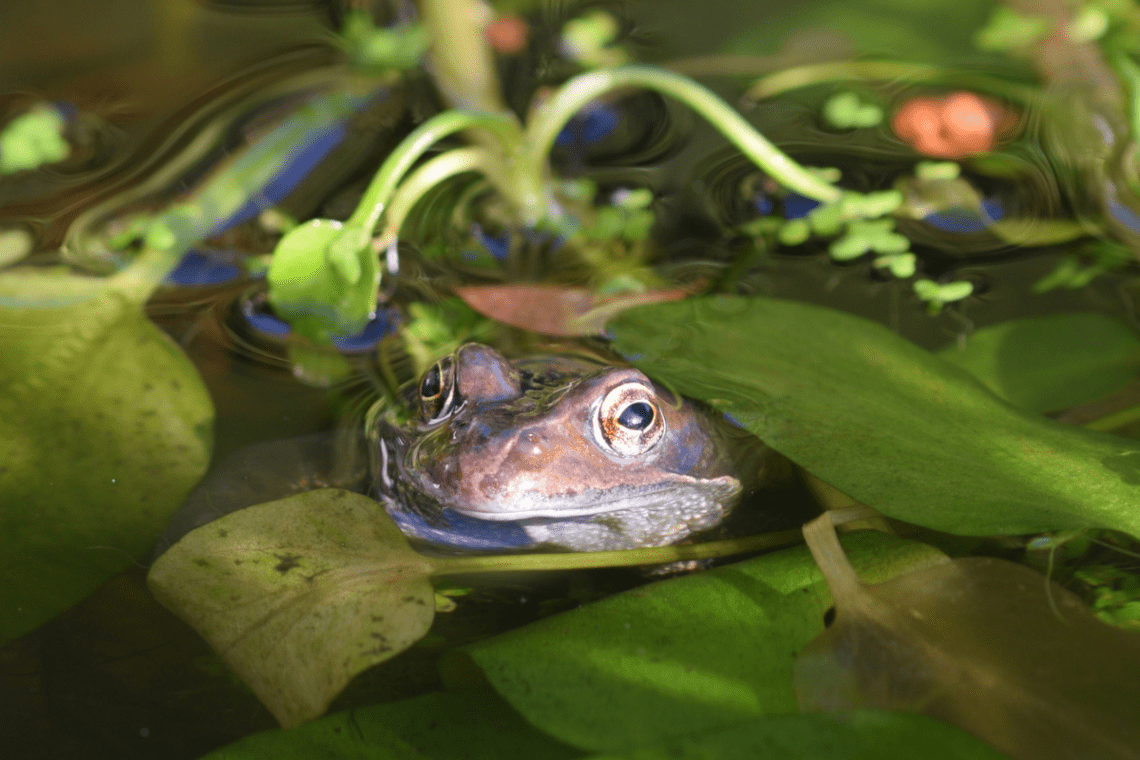
Pond ecosystems host diverse microhabitats that support various forms of life. Understanding these unique zones can enhance your appreciation of the intricacies within these lentic ecosystems.
Marginal Zones and Plant Life
The marginal zones, often called the littoral zone, are where you find a plethora of plant life. These areas are typically shallow and encompass the pond margin, making them ideal for plant species that thrive in water or at the water’s edge.
Here, you can find a range of floating plants which provide cover and breeding grounds for wildlife like ducks and kingfishers. Submerged plants also create oxygen-rich habitats that are crucial for aquatic organisms.
- Common marginal plants:
- Cattails
- Water Lilies
- Irises
- Horsetail
Open-Water and Floor Regions
Venture out into the open-water or limnetic zone, the area often teeming with life that includes small fish and drifting plants.
The further down you go, the cooler and denser the water becomes; this is known as stratification. It’s where light penetration diminishes, defining the transition to the profundal zone at the pond bottom.
Although less hospitable, this zone plays a significant role in the pond ecosystem, serving as the site for nutrient recycling and home to hardy species adapted to its dark conditions.
- Notable wildlife relying on these regions:
- Frogs and tadpoles
- Insects and their larvae
- Benthic organisms
Challenges and Sustainability
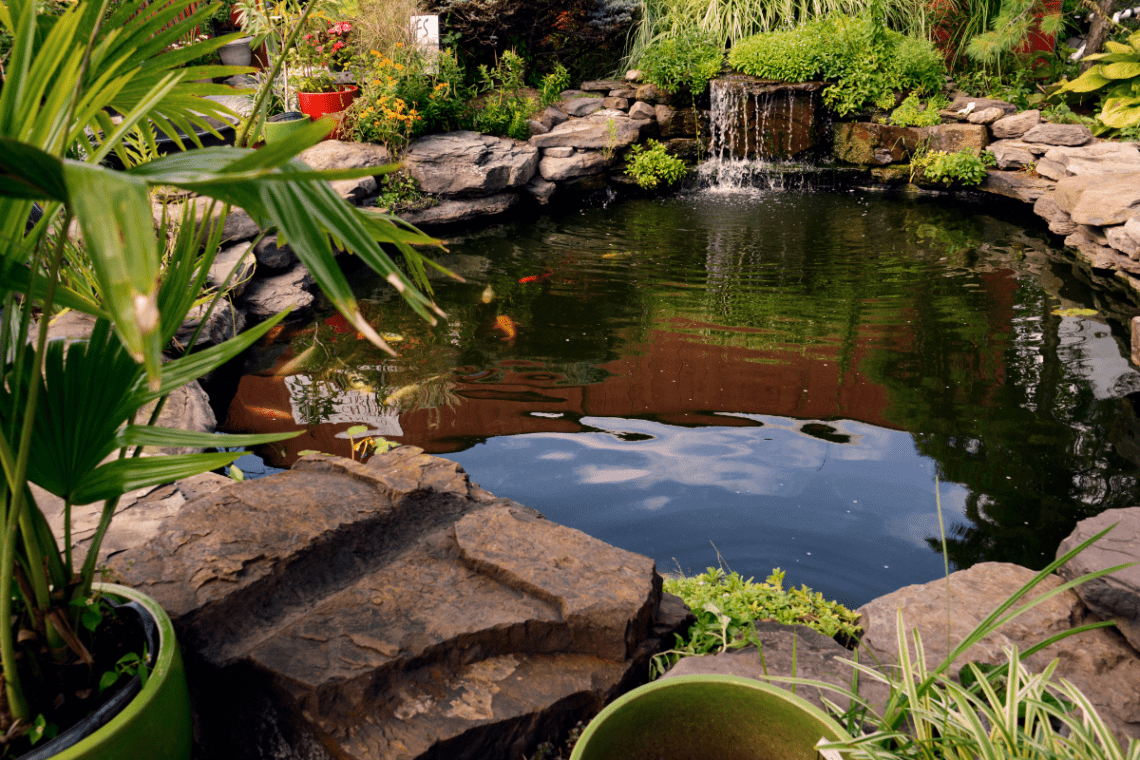
Ponds are subject to various challenges that can impact their sustainability. Pollution can introduce excess nutrients, leading to algal blooms that deplete oxygen and harm pond species.
Seasonal ponds may dry up, affecting small animals and microscopic animals dependent on these habitats. Addressing these issues is vital for preserving the delicate equilibrium of a pond’s ecosystem.
Environmental Stressors and Biodiversity
Ponds, as microcosms of freshwater habitats, harbour rich biodiversity but are often subject to environmental stressors that threaten their ecological balance.
Pollutants can lead to algal blooms, which deplete oxygen and can cause fish kills in your fish ponds. A key challenge is preserving the varied forms of life that ponds support, including some endangered species that rely on this habitat for survival.
Conservation and Management Strategies
To tackle these challenges, conservation and management strategies must be robust and research-led. The goal for wildlife ponds and freshwater ponds is to sustain ecosystem services and maintain a thriving biodiversity.
Actions such as regulating pollutants, creating buffers around ponds to protect them from run-off and implementing sustainable land management practices are vital.
Engagement with these strategies can make progress in conserving these precious ecosystems a reality, as seen in initiatives focusing on sustainability indices.
What Can Help Maintain A Balanced Ecosystem?
- Plants: With algae being a type of plant, allowing other plants into the pond means that the algae starve nutrients in the water. There is a large array of aquatic plants available, which will help balance the ecosystem and look beautiful in and around your garden pond.
- Fish: Fish can LOVE algae. Koi fish can feed on algae if they are large enough, slowly and gradually reducing algae growth.
- Filtration Systems: Filtration allows for circulating oxygen and the removal of any debris, including fish waste. Skimmers are fantastic for a pond as they ensure any debris (i.e. leaves, algae) or anything that’s blown into the pond is collected before they sink to the bottom and decay.
Transform Your Garden: Create a Thriving Pond Ecosystem with Our Expertise
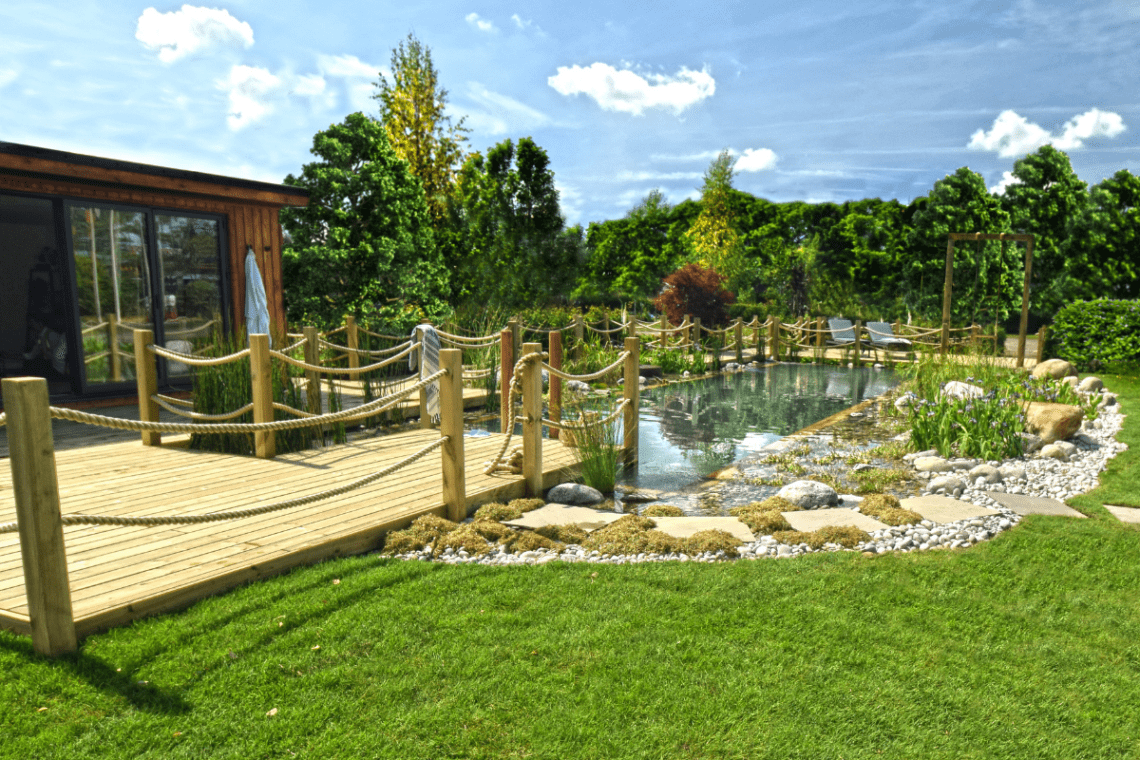
Are you inspired to create your own pond ecosystem or revitalise an existing one? Whether you’re dreaming of a tranquil garden retreat with a beautiful koi pond or a functional wildlife pond supporting local wildlife, the team at Ponds by Michael Wheat is here to help bring your vision to life.
With expertise in crafting bespoke pond designs that harmonise with your garden’s aesthetic while promoting ecological balance, our specialists are dedicated to creating spaces and pond maintenance packages that not only enhance your outdoor environment but also contribute positively to the local ecosystem.
Contact us to start your pond project and take a step towards a more sustainable and biodiverse garden.
10 Interesting Pond Ecosystem Facts
- Diverse Inhabitants: Did you know a single pond can house over 1,000 different species? From the tiniest microorganisms to vibrant fish and amphibians, ponds are bustling cities of nature. Each creature plays a crucial role, contributing to the delicate balance of the ecosystem.
- Natural Water Filters: Ponds act as Earth’s kidneys, filtering some pollutants and sediments from water through a process involving aquatic plants, bacteria, and soil. This natural filtration ensures cleaner, healthier environments for both aquatic life and the surrounding community.
- Biodiversity Hotspots: Ponds are biodiversity hotspots, essential for maintaining genetic diversity among species. This diversity is crucial for resilience to diseases and changing environmental conditions, ensuring ecosystem health and stability.
- Educational Platforms: Pond ecosystems provide unique learning opportunities. They allow for close-up observations of food chains, reproductive cycles, and seasonal changes, making them invaluable educational resources for people of all ages.
- Wellness and Recreation: The calming presence of a pond contributes to human wellness and recreation. Spending time near water bodies or in swimming ponds can reduce stress, improve mood, and enhance overall well-being, especially for pond owners.
- Carbon Sinks: By supporting a variety of plant life, ponds act as carbon sinks, absorbing carbon dioxide from the atmosphere. This process is essential for mitigating the effects of climate change, highlighting the environmental significance of pond ecosystems.
- Wildlife Corridors: Ponds act as vital rest stops and resources for migratory birds and other animal species, offering shelter, food, and breeding sites. A healthy ecosystem pond is critical for supporting wildlife populations and maintaining biodiversity.
- Indicator of Environmental Health: The health of a pond ecosystem often reflects the health of its surrounding environment. A thriving pond suggests a healthy, balanced ecosystem, while issues like algal blooms can indicate pollution or ecological imbalance.
- Supports Pollinators: Ponds attract a myriad of pollinators including bees, butterflies, and birds, providing them with water and habitat. This supports not only the local biodiversity but also the health of surrounding gardens and crops.
- Hibernation Havens: During the colder months, garden ponds provide a vital refuge for wildlife. Amphibians and some fish species use the pond’s deeper, mud-bottomed areas to hibernate safely through the winter.